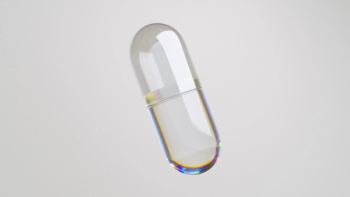
Making an effervescent tablet?
Here are 3 things you need to know.
Modern effervescent drink tablets are a disruptive force transforming the beverage market, but bringing an effervescent tablet to market is a complex process. Manufacturing an effervescent product can be more complicated than expected for many manufacturers mainly accustomed to producing traditional beverage products.
Effervescent tablets, also known as beverage or drink tablets, is a delivery system that uses effervescence or carbon to dissolve in water. Effervescent tablets are an efficient way to deliver ingredients with health benefits, such as for immunity enhancement, energy, hydration, relaxation, gut health, and vision support, among others. Tablets are portable and can be dropped in drinking water from the tap or into a reusable water bottle for convenient delivery. Effervescent tablets can deliver a larger dose of functional ingredients compared to traditional supplements, which is especially beneficial to people who struggle to swallow pills.
Although effervescent tablets got their start in the
Successfully launching a new effervescent tablet requires understanding its unique properties and manufacturing requirements. Below are three things manufacturers need to know before developing a new effervescent tablet.
1) Not all ingredients are ideal for effervescent tablets.
A unique formula is key to differentiating an effervescent tablet and gaining market share, but it is important to note that not all ingredients are ideal for effervescent tablets. Premix flavorings, sweeteners, and additives must be specifically designed for the unique characteristics of tablets.
One of the most important features of an effervescent tablet is rapid solubility. Unlike traditional powders, tablets dissolve quickly and completely in water. This trait ensures a consistent and enjoyable drinking experience, preventing gritty residues or clumps that can turn consumers away. As a result, ingredients such as magnesium stearate should not be used in effervescent tablets because they are insoluble in water and, consequently, a film will form on top of the water after the tablet has dissolved. Other insoluble ingredients, such as vegetable and fruit powders, are not good candidates for inclusion in effervescent tablets, although their functional components often can be used.
2) Effervescent tablets must be manufactured in tightly controlled conditions.
While many drink manufacturing facilities are designed to produce traditional beverage products, manufacturing effervescent tablets requires a more tightly controlled environment. The hygroscopic nature of many tablet ingredients makes moisture control essential, as even slight moisture exposure can cause premature effervescence or degradation. Quality control is critical, and any impurities or inconsistencies in raw materials can affect a tablet’s efficacy and taste. Ensuring tablet integrity both during production and packaging is vital to protect product quality. Taking into account the stability of ingredients over time is also a must. Effervescent tablets are susceptible to degradation from external air or moisture. Tablets must remain properly sealed in packaging to prevent air and moisture ingress to maintain shelf stability.
3) Effervescent tablet formulation impacts nutrient delivery.
The formulation of an effervescent tablet plays a pivotal role in determining how effectively nutrients are delivered to the consumer. Effervescent tablet formulas must be fine-tuned to ensure maximum bioavailability of functional ingredients. A key benefit of effervescent tablets is fast absorption and quick delivery of active ingredients into the bloodstream. The fast-dissolving nature of these tablets means consumers can experience benefits more rapidly.
Various ingredient combinations impact nutrient delivery in unique ways. The choice of binders, fillers, and disintegrants can influence a tablet’s disintegration rate, affecting the release of nutrients into the solution. Moreover, active ingredients such as vitamins and minerals must be selected with stability and compatibility in mind to ensure they remain bioavailable upon consumption. Flavorings and sweeteners are critical for palatability, but they should be chosen judiciously to avoid interactions that hinder nutrient absorption. Beware that some functional ingredients can “cancel” each other out. Additionally, the effervescent components, like acids and carbonates, can influence the dissolution rate, impacting the timing of nutrient release. Overall, crafting the right formulation is a delicate balance in which each ingredient choice can significantly influence the way nutrients are delivered and ultimately absorbed by the consumer’s body.
By understanding the manufacturing process for effervescent tablets and their unique properties, manufacturers can create innovative, market-leading products that cater to diverse consumer needs.
About the Author
Robert Shapiro is vice president of business development for Primaria Nutrition (Atlanta, GA), the nutrition division of GC Ingredients. Primaria Nutrition manufactures custom formulations in powder and liquid form for food, supplement, and value-added products. Primaria Nutrition specializes in nutritional premix solutions that include ready-to-drink (RTD) and ready-to-mix (RTM) drinks, performance/meal-replacement bars, dairy products, breakfast cereals, bakery products, tortilla solutions, sweetener blends, meat/poultry blends, supplements, and proprietary custom food blends. For more information, visit
Newsletter
From ingredient science to consumer trends, get the intel you need to stay competitive in the nutrition space—subscribe now to Nutritional Outlook.





